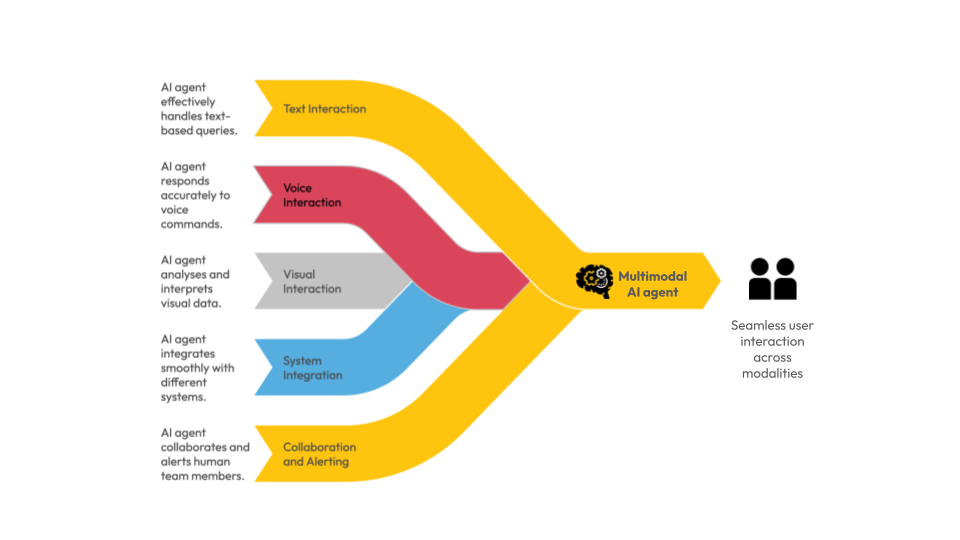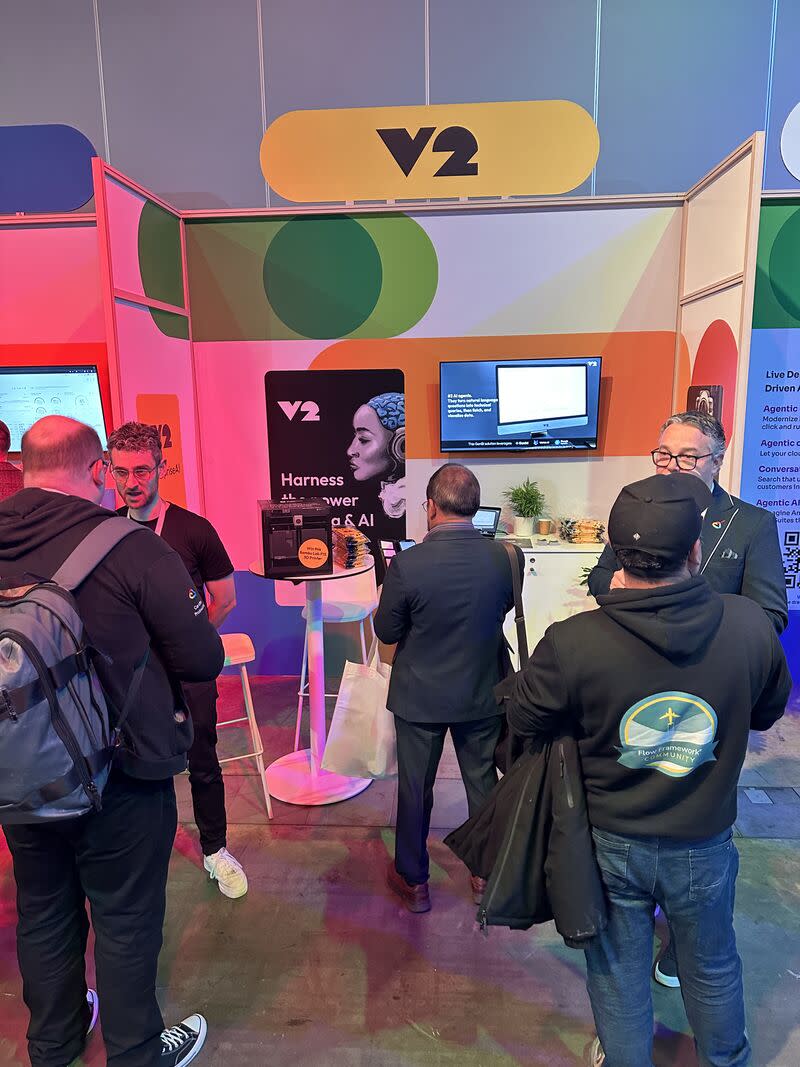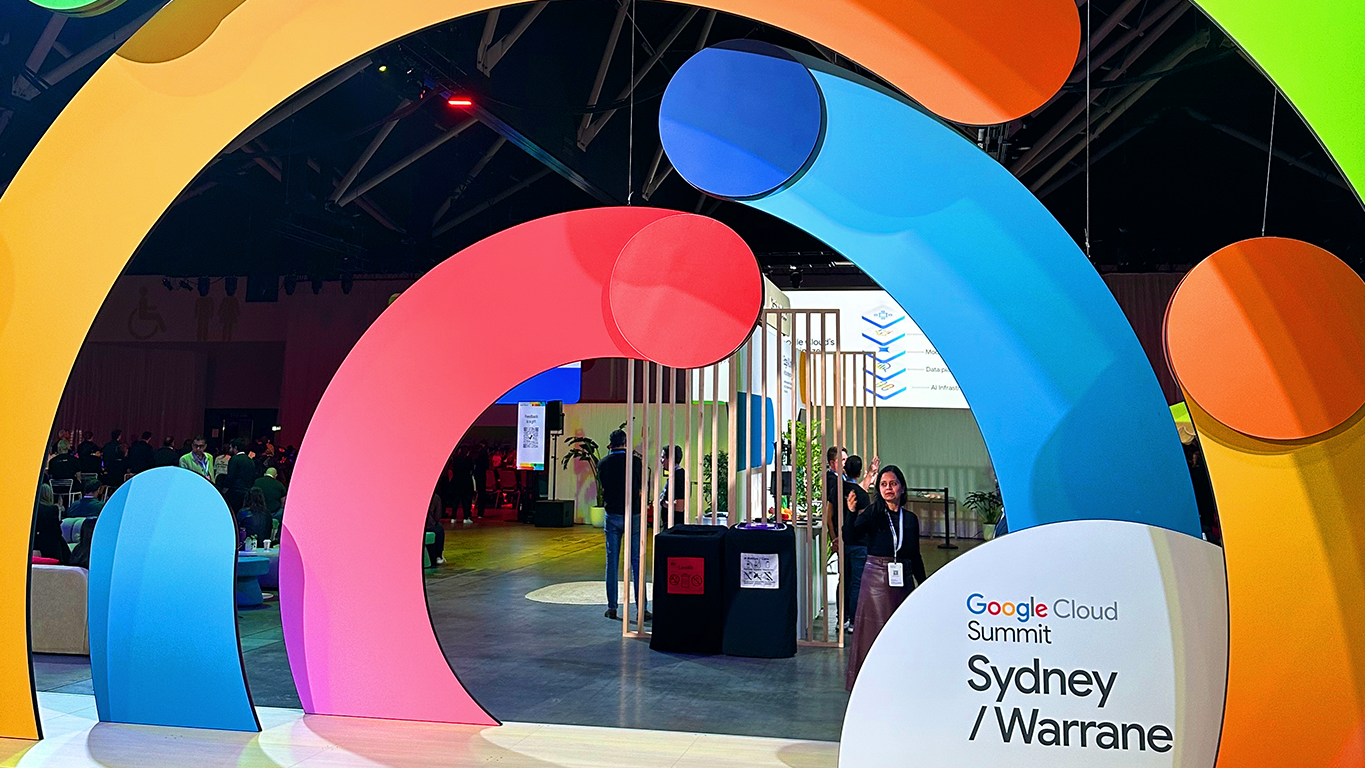TL;DR: Google Cloud Summit Sydney 2025 was an AI festival, showcasing technology capabilities organisations can use to build AI projects at scale. This blog highlights some of the tech on display, like multimodal AI agents and multi-agent ecosystems, along with other ways Google is supporting AI growth in Australia.
Google recently brought together thousands of innovators, business leaders, and developers for their annual summit in Sydney. The conversations and the technology on show made it clear: we are no longer talking about potential, but living in the age of practical, outcome-driven artificial intelligence.
V2, as a Google Cloud partner, was a proud sponsor, with our stand featuring an agentic AI-powered conversational analytics demo that was developed for an Australian superannuation company. Our solution enables company employees to talk to their data, leveraging Gemini, BigQuery and Vertex AI. We also offered visitors the opportunity to win a Bambu Lab P1S 3D printer!
This year, the Google Cloud Summit highlighted how the AI S-Curve has truly shifted from early adoption to growth. Any new technology goes through an S-Curve adoption - initially slow to catch on, then an acceleration, and finally flattens out again as it becomes the new norm. The S-Curve for cloud and infrastructure is flattening out, but cloud maturity is funnelling the growth phase of the new S-Curve - that being AI and agentic.

Key Learnings from the Event
Here are some insights on the AI development space highlighted in the summit.
Multimodal AI Agents Are Already a Reality
Multimodal AI agents are autonomous AI systems that can interact with end users across multiple modalities or input-output channels, far beyond the text and click interactions of traditional applications.
For example, at the summit, a Google presenter demoed a live multimodal AI agent solution in action in a “Simple Garden” product ecommerce experience. A customer, before final purchase, engaged with an AI agent to ask: “Is the soil I’m buying suitable for the flowers I purchased last time?”
The AI accessed the customer’s past shopping history, analysed the items in their cart, and determined that the selected soil wasn’t appropriate. When asked to recommend better alternatives, the agent updated the cart automatically, just like a real in-store assistant might do.
The customer then activated their device camera to show another plant and asked whether the recommended soil would work for it. The agent interacted with the live image and video feed to recognise the plant visually and confirmed compatibility.
When the customer asked about price matching and installation, the AI consulted with a customer service representative before responding to the customer.
Multimodal agents can thus interact across a range of data types, and in a sense, “listen, speak, see, and act” in a way that would be expected from humans. Organisations can use this technology in new and powerful ways to achieve tangible business outcomes.

Multimodal AI agents can interact with users across multiple input/output channels
Multi-agent Ecosystems and Tooling Are Emerging within Cloud Platforms
The future will require enterprise teams to orchestrate thousands of AI agents at scale. In that scenario:
How do you implement and enforce agentic behaviour rules?
How do you automate and control agent start/stop behaviour for cost optimisation?
How do you monitor, observe and debug agentic behaviour at scale?
Google has begun work in solving some of these challenges by introducing Agentspace, a control plane that lets organisations see, manage and collaborate across their internal agent landscape. Enterprise teams can choose and customise from thousands of pre-built agents as well as govern and secure all of an organisation’s agents from a central place.
While this is a starting point, there are plenty more innovation and commercialisation opportunities present in this space. However, Google Cloud’s move in this direction indicates that agentic AI adoption is accelerating faster than we think.
Google Investments Increase AI Opportunities for Heavily Regulated Sectors in Australia
Google’s Digital Future Initiative (DFI) has been steadily investing $1 billion over the last five years to enhance AI-focused research across Australia. It currently supports an AI research hub in Sydney and quantum computing research partnerships with Australian scientists and universities, alongside numerous other projects.
At the summit, Google has further extended this support by committing to run Gemini 2.5 entirely within Australia. This allows industries with strict data sovereignty requirements to store and process their data within Australia. Beyond compliance, it is opening up serious opportunities in health, finance, government and energy sectors.
AI Can Be Accelerated with the Right Partnership
You may have seen some Google AI-generated videos pop up in your social media feed. Google’s new Veo3 model can turn text-based prompts into eight-second-long video clips with sounds. Veo3 was initially only accessible to Gemini Pro and Ultra plan users; however, Google’s partnership with Canva accelerated adoption. Canva rolled out their Veo3 model to over 240 million users in just 21 days. Now, anyone can add AI video generator functionality to their systems and create AI functionality that would be challenging to create manually.
Thus, organisations can combine a strong internal AI vision with the right partnership to accelerate both AI project development and adoption. At V2 AI, our AI Velocity Framework is helping customers across industries take AI ideas from concept to production faster and more cost-effectively.

The V2 AI stand at Google Cloud Summit Sydney 2025, featuring an agentic AI-powered conversational analytics demo that was developed for an Australian superannuation company. Our solution enables company employees to talk to their data, leveraging Gemini, BigQuery and Vertex AI.
Conclusion - Focus on Outcomes over Tech for AI Success
The summit’s opening keynote by Paul Migliorini, Vice President, Google Cloud, Australia & New Zealand, emphasised advancements that have made AI development easier today. Over the last decade, organisations have struggled to get AI projects off the ground because of infrastructure challenges at scale. However, Google Cloud is removing that burden by delivering deeply integrated, AI-native platform capabilities that allow organisations to solve real problems with speed.
With technical capabilities now available for organisations to build outcome-focused AI solutions, AI success depends mainly on identifying use cases that deliver direct business outcomes. AI maturity is not about how many models you’ve tried or the technology you are experimenting with - it is about how much real business value your solution can deliver.
And the fastest path to that? Don’t wait for perfect data or perfect platforms; start with what you have and iterate over time.
Contact V2 AI to discuss AI use cases and ideas unique to your business.




